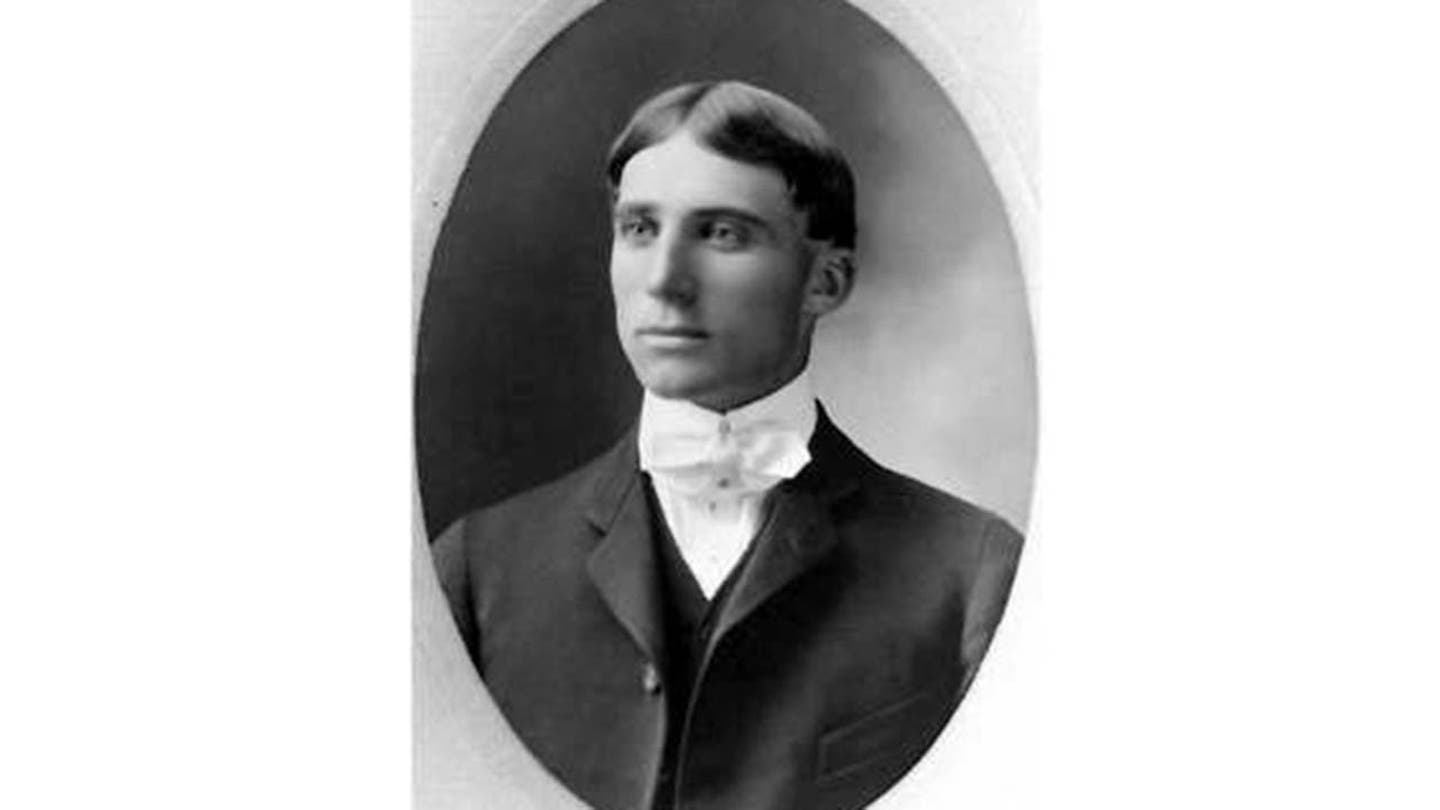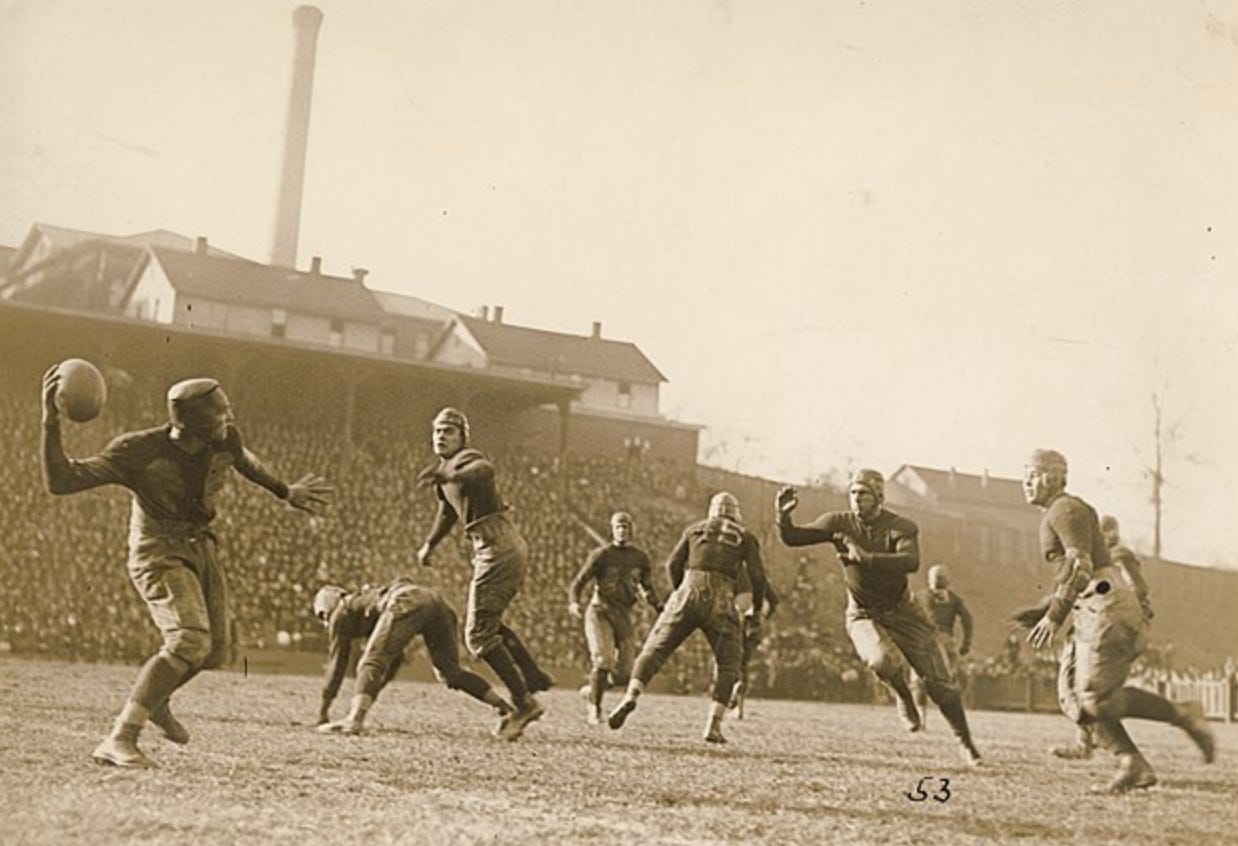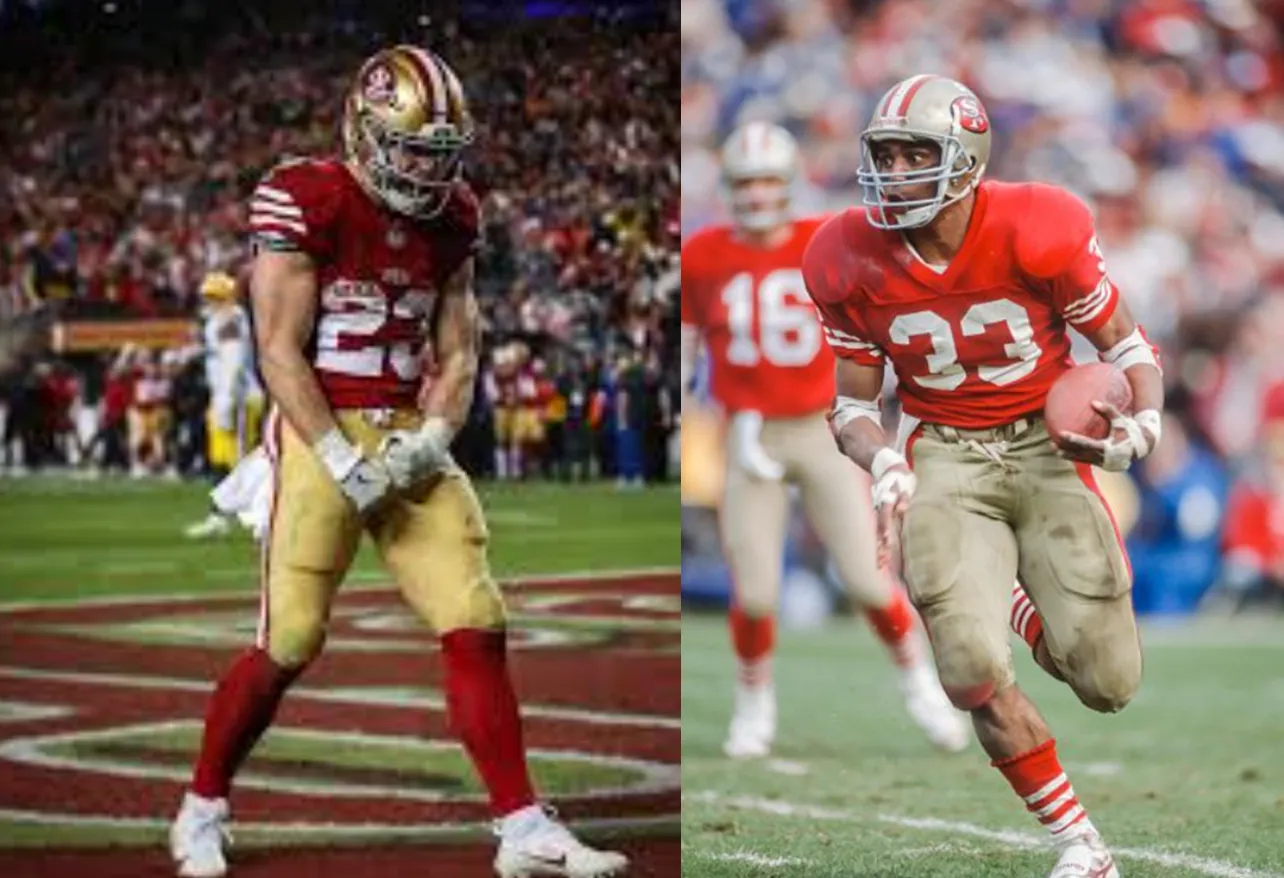History of mystery behind decline of RBs

We began this series on running backs with a warning:
“Mama, don’t let your babies grow up to be … running backs. Not anymore. Not unless something changes.”
Apparently, mama listened or already knew. My concern over the demise of this once heralded position is validated as we peek into the near future of running backs and see a trend that eventually may make them eternal teammates with the dodo bird.
Hall of Football, whose motto is to track football’s best of the best from the cradle to Canton, took a deep dive into our massive database and identified more than 1,100 active college and high school running backs. That includes 15-year-old high school juniors and college redshirt seniors in their early 20s.
Note: We are looking at one talented, ascending 15-year-old running back from Portland, Oregon. Take a look for yourself. Don’t be shy. You are here because you love football. So take a look. The video is about 21 paragraphs into the post.
Although ratings change as each season progresses, only nine running backs were or are five-star prospects at this time, based on NFL Draft Scout and Hall of Football ratings. Four are in the 2025 draft, but two of them are not even rated among the HOF top 150 at this time.
Why are there so few five-star running backs? Look at pro football and work your way back. To put it more bluntly — follow the money!
Running backs are the lowest-paid “position” players in the NFL, ahead of only punters and kickers. The list of reasons, almost all valid, is as long as you want it to be. Most of it is due to the game’s evolution to encourage prodigious passing production.
So, long before considering a running back, the pecking order of important players to fit under a salary cap includes offensive tackles, pass rushers, cornerbacks, and, of course, wide receivers and quarterbacks. A No. 2 or even No. 3 receiver now might be considered more important than a starting running back.
I talked to high school players, college scouts, and coaches of all kinds. They say the devaluation of the running back is clearly in the minds of young athletes. If a pre-teen athlete seems to have the physical ability to choose, he would invariably pick wide receiver, running quarterback — or even basketball — before running back.
On the other end of the talent trail, this is obvious to the pros. Since the first combined draft in 1967, only twice were running backs not selected in the first round: 2022 and 2024. You got it, two of the last three drafts.
So it is not a coincidence that while no running backs were selected in the first round this year, a record-tying six quarterbacks and seven wide receivers were called.
Oldest debate in football
Running vs. passing is the oldest dispute in football, with the biggest single surge of attention in … No, not in 1978, when the one-chuck rule was passed, and holding was legalized (well, the use of hands was legitimized for offensive linemen).
The big year of change for the running game— and all of football — was 1906, 118 years ago, predating even the NFL. The brutality of football, at the time a glorified rugby scrum, concerned even President Theodore Roosevelt. He was an avid fan but was hearing cries to abolish the game after 37 players died as a result of football injuries in the previous two years.
So, representatives of 60 amateur teams, a group that was a precursor to the NCAA, met after the 1905 season and cobbled together a rulebook that included at least 30 revisions.
It included the abolition of dangerous mass formations (scrums), the creation of a neutral zone between offenses and defenses (line of scrimmage), the doubling of the first-down distance to 10 yards (So, 1st-and-10 instead of 1st-and-5) — and the legalization of the forward pass.

And there it was, the legal forward pass, a ploy that elicited the disdain of old-school football folks who considered it kind of a wimpy trick play that avoided manly confrontation.
Historically, it was the beginning of the end for running backs. OK, it has taken 118 years to gain ground, or, rather, catch on, as it were. But the seed was planted.
When the forward pass first gained entry into organized football, incomplete passes were an automatic turnover. And they didn’t allow any gimmes like smoke screens because the ball had to be caught five yards beyond (or behind) the line of scrimmage. Oh, and the only eligible receivers were the two ends.
It would have been impossible for even the great Bill Walsh to deploy Roger Craig or popularize the West Coast Offense.
But a journey of a thousand miles begins with one step. (You need not cite me on that one.)
Although there are tales that claim otherwise, our research says that Saint Louis University’s Bradbury Robinson took that first step, and it initially didn’t go well.
On September 5, 1906, against Carroll College, Robinson threw the first legal forward pass, ostensibly to Jack Schneider. But the ball, a fat, rugby type that was hard to grip, fell to the ground, untouched. That was a turnover based on the rules of the time.
Later, Robinson threw again to Schreiber for a 20-yard touchdown, and SLU was on its way to blowing away the competition all season.
Interviewed in a Jacksonville, Florida hospital room in 1956, Schneider remembered that first pass reception 50 years earlier.
We were in the second half, and the game was tied when Robinson called the pass. Actually, Robinson was an end, and I was a fullback. But Brad could throw the ball a long way, so we switched positions for that one play. We were told to run after the snap and just keep going until we heard the passer yell 'hike' or our name. So, I ran and ran. I was about to give up when I heard Robinson call. I turned and caught the ball a yard or so short of the goal and went over with it.
This revolutionary play was a mere footnote in Bradbury Robinson's diverse life. He became a physician, was twice elected mayor of St. Louis, Michigan (1931 and 1937), and warned the world about the dangers of the pesticide DDT some 15 years before it became a worldwide cause célèbre.
But the play stunned the fans and the Carroll players. SLU went on to win, 22–0. Thanks largely to the forward pass, Saint Louis outscored its opponents, 407-11, that year.
The die was cast. Still, it took decades of further evolution, strategy changes, personnel changes, and rule changes — OMG, the rule changes — to consistently bloat passing statistics in the name of, ah, entertainment? Safety? Money? Nah, the NFL wouldn’t do something to our sacred game just for money, right?
Right!
What it did NOT do was value running backs—well, unless they could double as receivers. Hello, Christian McCaffery, the NFL’s 2023 Offensive Player of the Year, and the aforementioned Roger Craig, who, in 1985, became the NFL’s first player to gain at least 1,000 yards both running and receiving in the same season.

For now, the trend is to find mobile quarterbacks who can create havoc for defenses with their running ability. There were usually one or two of those around over the years. Who can forget Colin Kaepernick? (OK, that does not count every team in the league who eschewed his availability as a free agent.)
But we do have those running quarterbacks in increasing numbers. There is two-time NFL Offensive MVP Lamar Jackson of Baltimore. Philadelphia’s Jalen Hurts was this close (—) to being a Super Bowl MVP. All he had to do was win the damn game.
In the 2023 Draft, Anthony Richardson, gold medal winner of the Indianapolis underwear Olympics, was drafted by the Colts. This year, Jayden Daniels, kind of a Lamarr Jackson knockoff, was taken by the Washington Commanders.
This running quarterback stuff is obviously acceptable for owners and coaches. They apparently don’t mind seeing the face of the franchise running head-on into defenses. Hell, if it gets really bad, they can put in one of those cheap running backs to handle the heat.
Yeah, the NFL works in mysterious ways its miracles to perform. It often seems the almighty league does what it damn well pleases because it is too big to fail. Wait! That phrase has a disturbingly familiar ring.
The financial reality is that teams can’t pay quarterbacks $60 million a season — which is where this will soon be — and have enough trickle-down cash under the salary cap to sign proven running backs for what they are honestly worth.
After all, the career average for these brutalized backs is a league-low 2.57 seasons. So let’s review: Running backs qualify for the worst cruel and inhuman punishment in the sport, and for that, they get the lowest average pay of scrimmage players. So, on the positive side, maybe it’s better that they have the shortest average careers.
Looking back, maybe it should not have been that surprising that two of the most dynamic running backs in history—Jim Brown and Barry Sanders—walked away at the peak of their careers while they still could, Brown after nine seasons, Sanders after ten.
So, coming soon to a stadium near you: formations with a running quarterback and five players deployed as receivers, regardless of their named position on the roster. Sure, some may be listed as running backs, but that may be grounds to sue the league for false advertising.